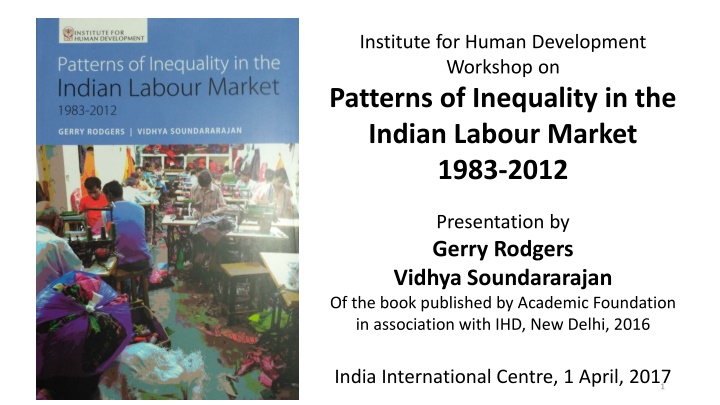Coaching Approach in Medical Appraisal Training
This PowerPoint presentation focuses on using a coaching approach in medical appraisal training in Scotland. It covers the aims of the module, learning outcomes, coaching techniques, coaching vs. feedback, benefits of coaching in clinical outcomes, and the differences between a doctor and a coach. The presentation emphasizes the importance of coaching in improving performance, staff engagement, and service quality.
Download Presentation

Please find below an Image/Link to download the presentation.
The content on the website is provided AS IS for your information and personal use only. It may not be sold, licensed, or shared on other websites without obtaining consent from the author.If you encounter any issues during the download, it is possible that the publisher has removed the file from their server.
You are allowed to download the files provided on this website for personal or commercial use, subject to the condition that they are used lawfully. All files are the property of their respective owners.
The content on the website is provided AS IS for your information and personal use only. It may not be sold, licensed, or shared on other websites without obtaining consent from the author.
E N D
Presentation Transcript
Institute for Human Development Workshop on Patterns of Inequality in the Indian Labour Market 1983-2012 Presentation by Gerry Rodgers Vidhya Soundararajan Of the book published by Academic Foundation in association with IHD, New Delhi, 2016 India International Centre, 1 April, 2017 1
Introduction Introduction This analysis of labour market inequality forms part of a wider comparative study of Brazil and India Theoretical framework of the wider study: long term historical analysis of the impact on inequality of growth regimes and institutional change Goal of this publication is more modest - looks at major dimensions of labour market segmentation and differentiation in India an input to the wider picture We look at wage and employment differentials by labour status, gender, caste/community, region and education. Drawing on a large literature (Thorat, Deshpande, many others). We also looked at some other related aspects of inequality, in particular the distribution of household expenditure, factor shares, and occupational patterns First some (familiar) basic trends: 2
Distribution Distribution of monthly per capita expenditure of monthly per capita expenditure 3
Gini coefficient of wages, rural and Gini coefficient of wages, rural and urban urban 0.55 0.5 0.45 Rural Urban 0.4 0.35 0.3 1983 1994 2005 2012 4
Individual characteristics correlated with wage/earnings inequality Individual characteristics correlated with wage/earnings inequality Focus on wage earners and salaried workers; exclude the self- employed, due to data constraints Source: National Sample Survey; years 1983, 1993-94, 2004-05, and 2011-12 Characteristics of interest in the monograph: Work type (regular/casual) Gender Social Group (caste and religion) Education Region of residence Focus on four of these five characteristics in this presentation.
Quantitative Methodology for inequality analysis Quantitative Methodology for inequality analysis 1) Decomposition of key inequality measures: Theil index (TI) ?? = ????????? ?????+ ????? ?? ????? We recognize limitations to the decomposition exercise. 2) We also examine: Wage ratios across different categories Histograms of log wages, examining visual changes 3) Multi-variate framework: Fields decomposition of the log wages (multivariate framework)
Wage Decompositions Casual Casual- -Regular worker type Regular worker type Rural Casual wages relative to regular, fell from 1983 to 2004-05, and rose again in 2011-12 (consistent with labour market tightening) (BELOW) Changes in the between-component of wage decomposition parallel change in wage ratios. (RIGHT) Differences in work-type accounts for almost a quarter of rural wage inequality in 2012. (RIGHT) Wage ratios Urban
Gender Gender Improving wage ratios for women compared to men (TOP). Perhaps reflect gender-equalizing labour market participation in all categories However, women s labour market participation declined from 28% in 1983 to 23% in 2011-12. Between wage inequality contributed to a large share for casual workers (RIGHT)
Socio Socio- -religious groups religious groups 1) Scheduled Tribe 2) Scheduled Caste 3) Hindu OBC (includes lower and middle castes) 4) Hindu Others (mainly upper caste) 5) Muslim OBC 6) Muslim others 7) Other religion Between inequality is higher for casual more than regular workers in rural areas and regular more than casual in urban areas (LEFT) Among regular workers, group classifications matter more for females rather than males. (LEFT)
Educational categories Educational categories Wage premium for all school levels below middle school is falling over time (BELOW) Premium to college education to secondary school increased from 50% to 137% (BELOW) Education contributes to wage inequality more among regular than causal workers. Education is important among both male and female regular workers (patterns differ in rural and urban)
Fields decomposition of wages Fields decomposition of wages Rural areas The role of education in explaining wage inequality is the highest among all factors; stronger in urban compared to rural areas Gender is important in rural and urban areas, but the importance is declining in urban areas and increasing in rural areas Urban areas Social group does not feature as dominant factor (NEXT)
Probit regression of education on individual characteristics in 2012(rural) College Education or Secondary Education or Above (0 OR 1) Above (0 OR 1) SOCIO-RELIGIOUS GROUP (base: Hindu ST) 0.389*** (0.000884) 0.549*** (0.000803) 0.971*** (0.000829) 0.0588*** (0.00120) 0.458*** (0.00114) 0.825*** (0.00116) 0.359*** (0.000530) 0.602*** (0.000477) 1.134*** (0.000526) 0.161*** (0.000718) 0.554*** (0.000709) 0.904*** (0.000843) Hindu SC Hindu OBC Hindu Other Caste Muslim OBC Muslim Non OBC Other Religion REGION (base: Northwest) Center -0.315 (0.000554) -0.382*** (0.000739) -0.0657*** (0.000565) 0.702*** (0.000952) 0.0580*** (8.21E-05) -0.264*** (0.000355) -0.182*** (0.000425) -0.205*** (0.000535) 0.184*** (0.000443) 0.894*** (0.000847) 0.0766*** (5.81E-05) -0.418*** (0.000255) Northeast + WB Southwest Kerala Ln landowned pc Female (Base: male)
Comparing different aspects of inequality Gini coefficient compared between surveys and across variables, 2004-05 13
Inequality of household expenditure per capita Inequality of household expenditure per capita Not the main focus, but briefly: The contribution to expenditure inequality of social group and of region is comparable to that found for wages Likewise contribution of education (of household head) Economic category of household contributes less to inequality than does the difference between regular and casual workers for wages This may be because the data do not permit us to differentiate between different types of self-employment 14
Wage, profit and rent shares in value added, organized Factor shares in organized industry Factor shares in organized industry manufacturing, India, 1981-82 to 2011-12 0.700 0.600 0.500 Wages share Salary share Rent & interest share Profit share 0.400 0.300 0.200 0.100 0.000 1981-82 1983-84 1985-86 1987-88 1989-90 1991-92 1993-94 1995-96 1997-98 2003-04 2005-06 2007-08 2009-10 2011-12 1999-2000 2001-2002 15
India and Brazil: Fields decomposition (urban wages, 2011 India and Brazil: Fields decomposition (urban wages, 2011- -12) 12) 100% 2.0 3.5 90% sector occupation employment type education age social group gender region 25.6 27.1 80% 70% 13.0 7.8 60% 50% 31.9 40.9 40% 30% 12.0 20% 10.4 2.5 4.2 10% 1.6 5.7 8.7 3.0 0% India Brazil 17
Some reflections on results Growing wage inequality in India results from some opposing trends Contribution of education to wage inequality fairly stable, but higher in urban labour market so rises with urbanization On the other hand, importance of casual-regular wage gap is large but falling, as is the gender wage gap in urban areas (but it is rising in rural) But the main factor in growing inequality seems to be rising wage differentiation among occupations The impact of gender is stronger in multivariate analysis than in bivariate, but that of caste is weaker; different mechanisms at work? Especially for the impact of caste and gender, overall labour market inequality depends as much on unequal access to occupations as on unequal wages Since educational credentials are important for job access, discrimination in access to education is an important indirect source of labour market inequality 18
Some research issues This exercise is limited in scope decomposition only tells part of the story but does suggest some questions that merit more research Occupational differentials are of growing importance, but much less researched; important for the dynamics of inequality, connections with the growth process, new labour market segmentations Role of differentiation in self-employed incomes (needs new data IHDS?) Are there different mechanisms of discrimination and access for caste and gender? Regional patterns all-India pattern is a composite. There are important regional differences in the sources of inequality. Need to unpack. Statistical base has some important gaps (self-employment, household income ). What can be done with planned new survey instruments? There are linkages between different aspects of inequality wages, incomes, wealth. This requires better models of household composition and behaviour. 19
Decomposition of wage inequality by region Regional inequality Regional inequality We classify Indian states into five broad regions: 1) Northeast; 2) Northwest; 3) Southwest; 4) Centre; 5)Kerala Urban labor market is more integrated than rural labor market Less regional inequality among regular workers, compared to casual workers
Equalization of participation across labour market categories among men and women
Intriguing regional trends in social inequality Intriguing regional trends in social inequality We examine few specific states given regional differences in the role of social groups. Bihar saw a sharp rise in between component after 1994 In Tamil Nadu, social inequality stayed constant at about 20% in rural areas, but low in urban areas In Punjab, low social inequality with no major trend Haryana s between group inequality is declining























